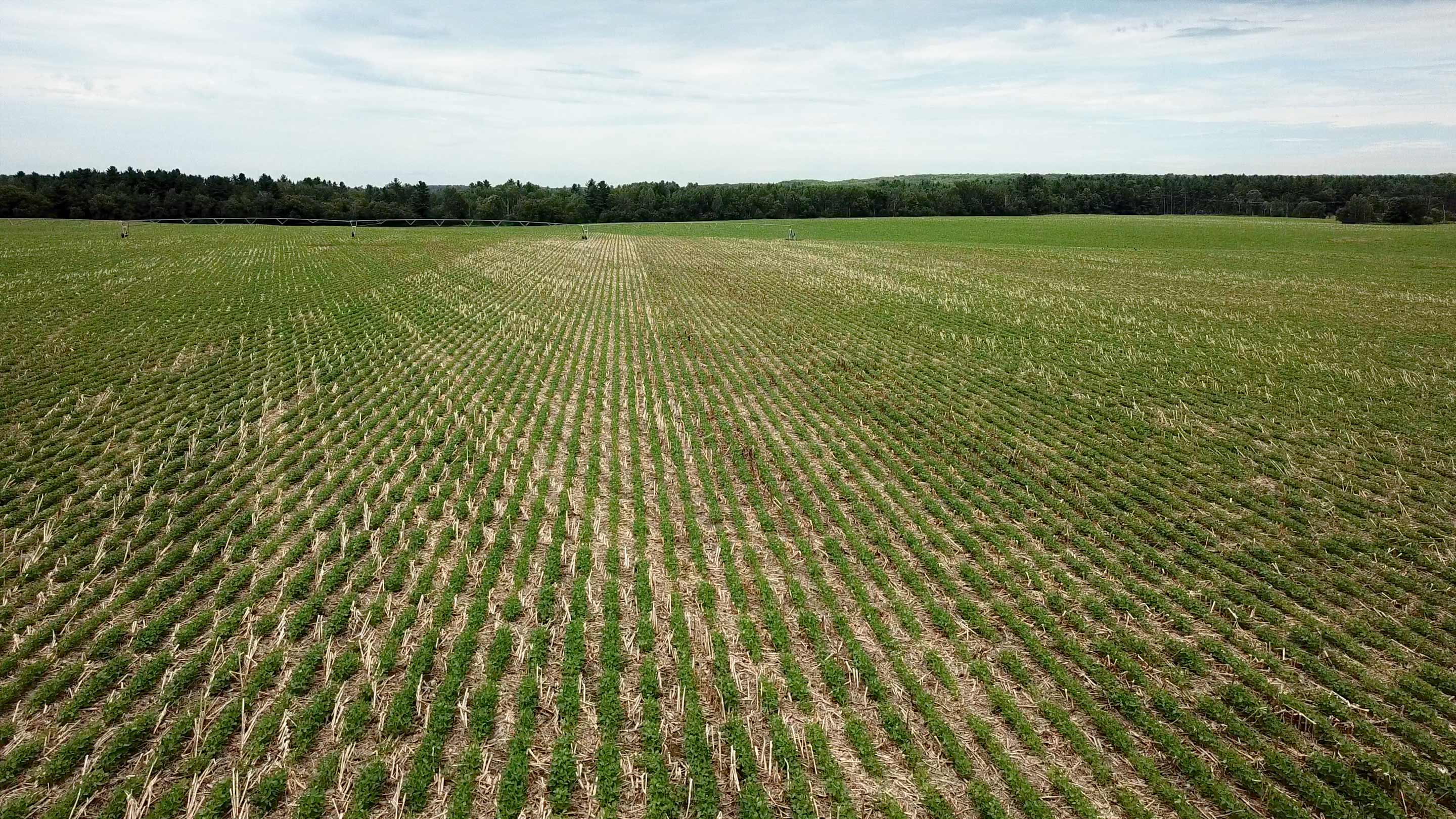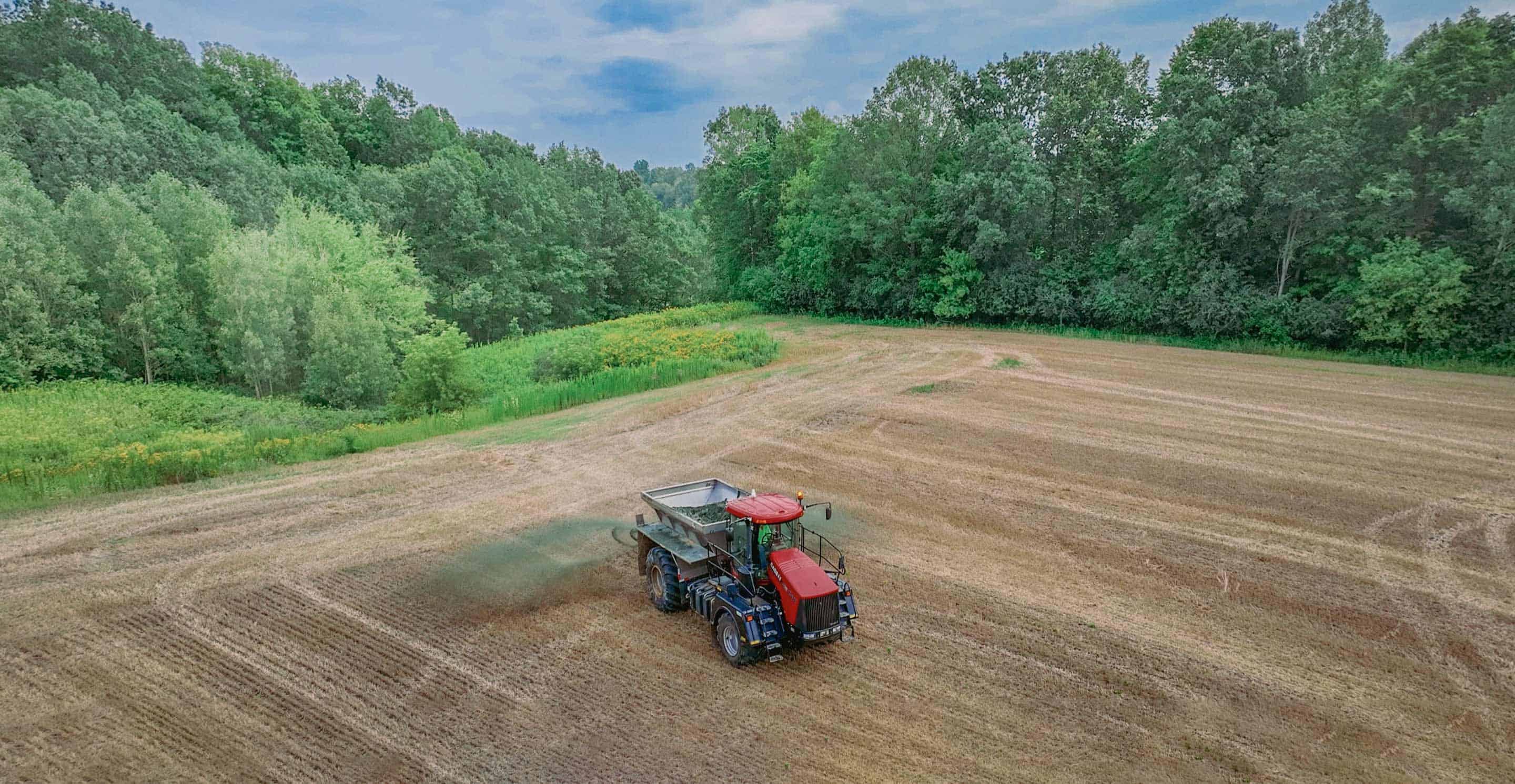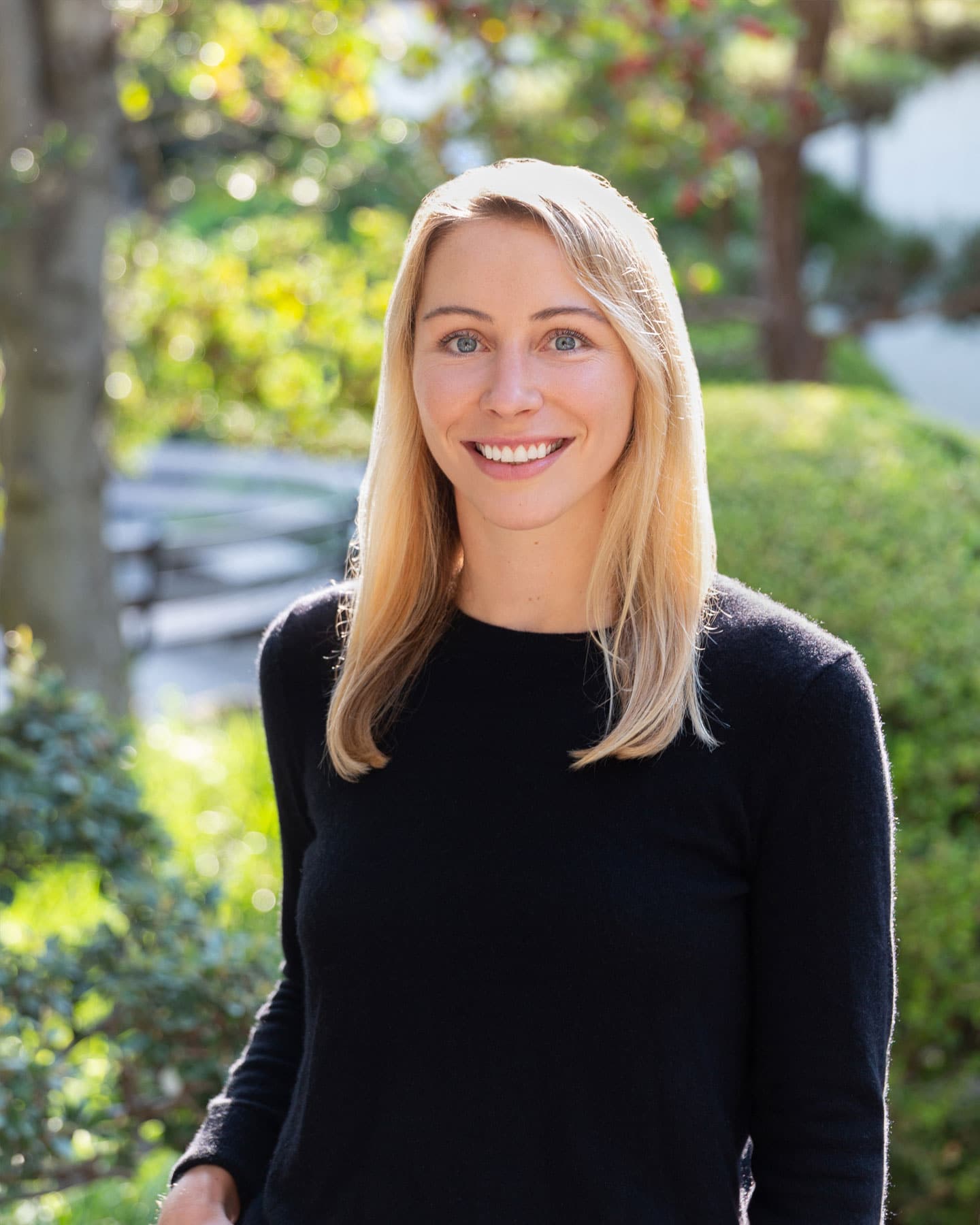Evaluating Carbon Removal Solutions at Fall Line
Agriculture sits in a unique position in the context of climate change. The industry is responsible for a tremendous amount of emissions; the EPA estimated that agriculture accounts for 11% of greenhouse gas emissions in the United States in 2020. However, soil is a major carbon sink and land and biomass are critical components of the carbon cycle. At Fall Line, we believe that landowners and farmers can be stakeholders in carbon dioxide removal, “CDR”.
We have focused our investment strategy on CDR solutions that require large quantities of land or utilize agricultural feedstocks, these include: soil carbon, afforestation, enhanced weathering, biochar, and bioenergy carbon capture and storage. From a venture and project funding perspective, discussions around carbon removal technologies frequently focus on quantity, permanence, measurability, and scalability. Our farmland fund gives us a unique view into how implementing these new technologies and working with CDR startups will fit into current land management and farming practices, which will be critical to scaling these technologies. In this article, we share how we evaluate CDR technologies for Fall Line’s farmland and our experience with driving farmer adoption.
The questions farmers and landowners will ask about carbon programs
There is a natural variability in how different CDR methods fit into agriculture work streams and carbon removal outcomes. In the long term, adoption of these technologies will be driven by which offering optimizes farmer earnings, required participation, yield impact, and soil impact. Beyond having a positive climate impact, farmers and landowners care about the following.
• Effort and participation of the farmer or landowner
• Farmer responsibility in managing the carbon removal
• Amount of land required
• Participant earnings
• Potential yield impact of the carbon removal service (positive and negative)
There are opportunities for companies to differentiate by selecting and optimizing a specific area, whether it is participation, co-benefits, land required, or earnings. In the short term, farmer awareness of programs is limited, and many carbon programs are not available in all regions. From our experience, this has led to noticeable contract and operational differences in company offerings. Being able to clearly communicate program requirements is an opportunity for differentiation and scale in the short term.
Secondly, many offerings are new to the market and farmers need to see that risks have been mitigated before adopting a new practice or agreeing to a new service. We also look to validate the science and technology as well as assess risk by looking at the following in diligence:
• Trials data: covering the efficacy of adopting the service or product and including details on yield and soil impacts.
• Product specifications and information: if the solution or service requires adding a new product to the field, details around the quantity, active ingredient, and review of any potential toxicity.
• Talking to existing customers: to assess the effort required and experience with the offering.
• Testing on our fields: at Fall Line, when we deem the agronomic risk of the product or service to be small, we appreciate the opportunity to gain firsthand knowledge of the offering, impact, and operations through testing new technologies on our farms.
The above diligence items are applicable to all carbon removal methods. However, we do see differences in how different methods can best align with agriculture. Specifically, soil carbon, which is reliant on farmer participation has a different set of opportunities than enhanced weathering, biochar, and bioenergy carbon capture and storage (“BECCS”). Soil carbon sequestration is influenced by farmer activities and management, and therefore requires direct participation. Enhanced weathering, biochar, and BECCS are positioned as carbon removal services and the companies offering these services might only require the signoff of the landowner or farmer to be performed. These offerings are new to most stakeholders and therefore require a deeper level farmer education. In this article we will explore each of these spaces and what is critical for unlocking farmer adoption.

Evaluating Soil Carbon Opportunities at Fall Line
Soil carbon is likely the first carbon sequestration pathway that comes to mind when thinking about agriculture since it is directly tied to land management and agricultural practices. Globally, soil holds three times more carbon than the atmosphere. Soil organic carbon accumulates through photosynthesis which deposits CO2 into the soil. Farmers can conserve organic matter by mitigating soil disturbance, reducing soil erosion risk, along with adapting conservation farming practices. Preserving soil organic matter can improve the nutrient profile and structure of the soil which benefits yields. This alignment is why building soil carbon has been billed as an appealing method for increasing carbon sinks. At Fall Line, soil conservation has been central to our farmland fund thesis since the inception of our firm in 2011.
Soil carbon is varied and easily reversible. Therefore, the big opportunity in soil carbon is in improving measurement and in proving out the cause and effect relationship of practices and products on carbon sequestration. A major step towards bringing confidence in soil carbon is the effort of carbon programs to build buffer pools and standardize program requirements. Standardization will allow farmers to assess and price soil conservation practices relative to effort, without wading through differences in carbon contracts. Measurement, payment transparency, and stakeholder alignment are critical developmental areas where companies can drive meaningful differentiation.
Soil carbon can only be built and preserved through collaboration and coordination across the landowner, farmer, and carbon program. From an investment perspective we are especially interested in companies that are working on the following:
• Scalable measurement technologies that improve transparency around incentives
• Developing products that measurably accelerate soil organic carbon accumulation
Scalable measurement technologies that improve transparency around carbon incentives
We are interested in cost effective measurement solutions that work at scale and ideally offer additional soil information to operators. As models, remote sensing, and new in-field measurement technologies develop, there is an opportunity for measurement companies to be the driving force in setting standards for pricing, program involvement, and participant alignment. We have found that many startups are looking to differentiate on carbon program partnerships, cost, and technology. From our view, there is an opportunity to differentiate through the information provided back to farmers, field operations, and responsibilities placed on landowners and farmers. In testing carbon programs and measurement technologies on our fields, we have noticed a high degree of variation across how information is shared and the requirements of farmers. In the near term, being up front about these details with farmers, investing in operations, and sharing requirements openly can be a major differentiator in gaining farmer acceptance.
Developing products that measurably increase soil organic carbon
Another opportunity in soil organic carbon is the development of products that accelerate the sequestration of atmospheric carbon into carbon in the soil. Fall Line’s portfolio company, Pluton Biosciences, has identified microbial consortia that play similar roles as cover crops in carbon sequestration and nitrogen fixation. Branded as Pluton’s Microbial Cover Crop, the product offers agronomic benefits through increasing soil microbial activity and offers a potential income stream for farmers by partnering with soil carbon programs. As products like Pluton’s Microbial Cover Crop align themselves to programs and clarify farmer earnings, operators can begin to assess risk and return which will unlock adoption for products that demonstrate that they optimize operator earnings, effort, and agronomic impact. We are eager to evaluate companies that are developing products that are aligned with soil carbon because these offer a clear cause and effect regarding carbon sequestration.

Durable Carbon Removal Opportunities
Agriculture and nature-based systems are inherently complex and organic matter in soil can easily release CO2, especially if the soil is disturbed through tillage or erosion. Fall Line continues to believe in the value of soil conservation practices and working to preserve organic matter in the soil. Our understanding of the inherent variability of soil carbon and the importance of permanent carbon removal for reversing climate change, has led us to explore investing in other durable and measurable carbon solutions: enhanced rock weathering, biochar, and bioenergy carbon capture and storage.
We find these solutions particularly compelling given the permanence of carbon sequestered and co-benefits to farming. Biochar and bioenergy carbon capture and storage use feedstocks, often agricultural residues, and heat to transform those into a geologic form of carbon. Enhanced weathering is the practice of applying silicate rock dust to land to accelerate the natural carbon cycle.
Similar to soil carbon, we leverage our unique perspective to evaluate how CDR technologies and players align to agriculture work streams. Companies commercializing these CDR methods often deploy vertically integrated business models, where one company handles the carbon removal service, measurement, and modeling. What is appealing about these technologies to a farmer or landowner is that they reduce the participant oversight which allows the participant to weigh the effort relative to value. These solutions introduce a new product (biochar, silicate rock) or new practice (residue removal). Therefore, communication around the service and offering, and well executed field operations are especially important for developing farmer trust. Secondly, many of these solutions offer co-benefits; for example, silicate rock can reverse soil acidification, increase available silica, and replenish soil nutrients. These co-benefits are appealing to farmers, but since co-benefits differ company to company based on the specific practices, this could diminish an understanding of the value. Given that these offerings are new and have varying co-benefits, gaining adoption can be a chicken and egg problem. Here are ways that we have seen companies build trust when launching a new CDR service or product in agriculture:
• Data-backed proof points: farmers and landowners will often ask to see trials data, customer case studies, and product and service specifications.
• Regionalized channel strategies: partnering with regional agronomists provides access to acres and lowers the trust barrier. Equipping participants with a field or customer success team can achieve this too. Working with agronomists or building a customer success team is a key retention driver.
• Reducing risk through insurance: this can be achieved through offering yield risk guarantees, insurance protections, and communicating measurements and data after a CDR service is performed.
• Closing the information loop: often the most overlooked, well-coordinated operations that share information with the farmer, including measurement and monitoring results, will have an advantage in building a strong reputation.
Our portfolio company, Lithos, supplies crushed basalt rock that replaces ag lime and also accelerates a naturally occuring atmospheric carbon removal process. We were interested in their ongoing trial results and ability to optimize weathering rates based on climate and location. Their technology allows them to share predicted weathering rates with farmers and landowners ahead of application to clearly communicate soil pH impacts and CO2 removal expectations. This was critical for Fall Line and Lithos to assess the return on time and investment for deploying in Fall Line fields this summer.

Conclusion
As investors and landowners, we continue to weigh the cost per ton of removal against the permanence, scalability, and co-benefits of these solutions, however, we view alignment with the existing supply chain as a huge driver of scalability. In the future, we are optimistic that operators and landowners will be able to select from a portfolio of CDR services and optimize for effort, payment, and operational and agronomic alignment. To bridge operator and landowner trepidation in the short term, companies can leverage rigorous scientific proof points, case studies, and regional agriculture stakeholders to develop trust.
Accessing acres for trials, measurement, and methodology validation is critical in early years. At Fall Line, we are eager to work with companies accelerating carbon removal through our farmland holdings and to share ideas. This article highlights only a selection of adoption drivers and our unique perspective looking to leverage our land for environmental and carbon services. If you are working on technologies that sequester carbon through leveraging large quantities of land, we would love to talk.

